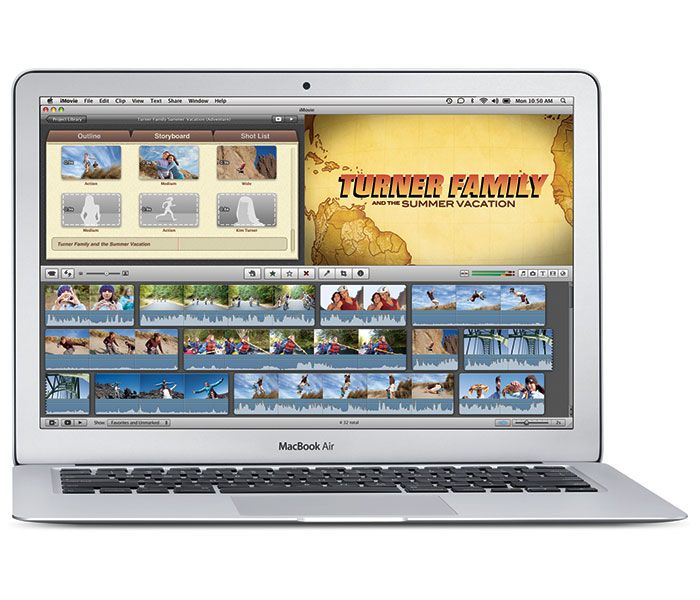Apple's new MacBook Air: should business travellers snap it up or slap it down?

Apple's MacBook Air certainly struck a chord when it was first released, with Steve Jobs' showmanship of pulling it out of a manilla envelope. But its many limitations crippled its appeal to the broader marketplace, with Apple selling modest numbers compared to its wildly popular MacBook and MacBook Pro ranges.
The refreshed MacBook Air model, which goes on sale in Australia this week, has corrected some of the limitations of the original model. After persistent criticism that a single USB port was not enough, Apple has adding a second USB port on the other side. That's perhaps a small touch but it allows the simultaneous connection of two things a frequent traveller uses a lot – a USB memory key and a 3G modem.
On that point, Apple is still resisting integrating 3G modems into any of its computers, despite most other computer manufacturers offering it as an option on some models.
Apple's prefered solution is iPhone tethering via a Bluetooth wireless link between the phone and the computer. This does have the advantage of not requiring a second SIM card and mobile broadband plan, but has the disadvantage that many companies do not allow the use of iPhones. Bluetooth can also be less reliable than a hardware-integrated modem.
Apple is ditching the conventional spinning hard drive in the new MacBook Air, in favour of a 64GB, 128GB or 256GB flash drive. For travellers, flash is ideal because it has no moving parts and is at less risk of mechanical damage from vibration – but its real advantage is is much greater speed than traditional hard drives. Mechanical hard disks have become a bottleneck in modern computers, where system speed is held back as the hard drive struggles to keep up with reading and writing data.
The new MacBook Air also has no DVD drive, although a slimline external USB drive is available as an option. For the first time, Apple is providing a Mac OS X restore disk as a slimline USB memory key, rather than a set of DVD discs.
If you're travelling to a workplace that only has traditional ethernet ports at desks, you'll need to spring for the optional extra USB-to-Ethernet adaptor, too, as the MacBook Air has no Ethernet port. However, with many hotels now offering WiFi in rooms, this is less of a necessity than it was when the Air was first released.
The new model comes in two sizes – an ultracompact 11.6in and 13in. Both models still include a full-size keyboard, the large glass multitouch trackpad which allows multiple-finger swipes and pinches to get round Mac OS X and software quickly. The screens are LED-edgelit LCD.
The MacBook Air power adaptor is 45W – a low enough wattage to be used on planes without tripping the fuse in the seat and shutting down the power system (some plane seats will shut power off to laptops that use higher wattage power packs like the 85W pack used for the MacBook Pro.) Apple claims seven hours' battery life for the built-in battery in the new Air – which means in real use it's likely to see four to five hours. Like all MacBooks now, the battery is part of the internals of the machine and can only be swapped over for a new one at an Apple service centre.
The biggest disappointment for business travellers is that the new MacBook Air still packs fairly sluggish processors: Intel's older Core 2 Duos running at 1.4 or 1.6GHz in the 11.6" model, or 1.86GHz / 2.13GHz in the 13" model.
This puts them well behind many of the competing ultra-compact notebooks, such as Sony's Vaio Z series or the Toshiba Portege R700, which are available with processors right up to Intel's top-of-the-line Core i7. However, there's no doubt that no other manufacturer has the sleek industrial design that Apple has.
Pricing is also sharp on these models. The high price the MacBook Air commanded upon its initial release has been slashed, with the top-of-the-line 13" model going for just $1949. The 11" base model costs $1199, but it is rather significantly hampered by its 64GB storage limitation.

25 Oct 2010
Total posts 24
Hmmm, looks like MUCH better value than the first one of these. My husband has the original and he find it okay for the web but thats about all, and the battery life is only a few hours with wireless.
Hi Guest, join in the discussion on Apple's new MacBook Air: should business travellers snap it up or slap it down?